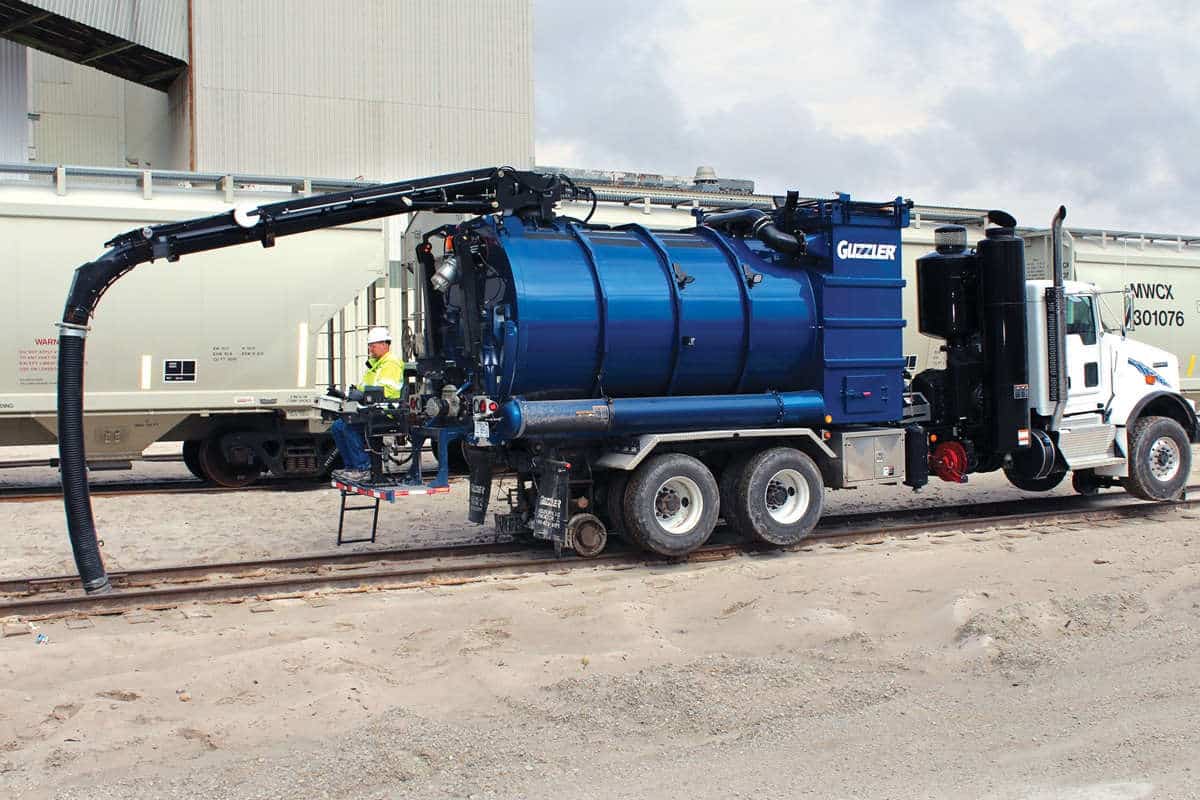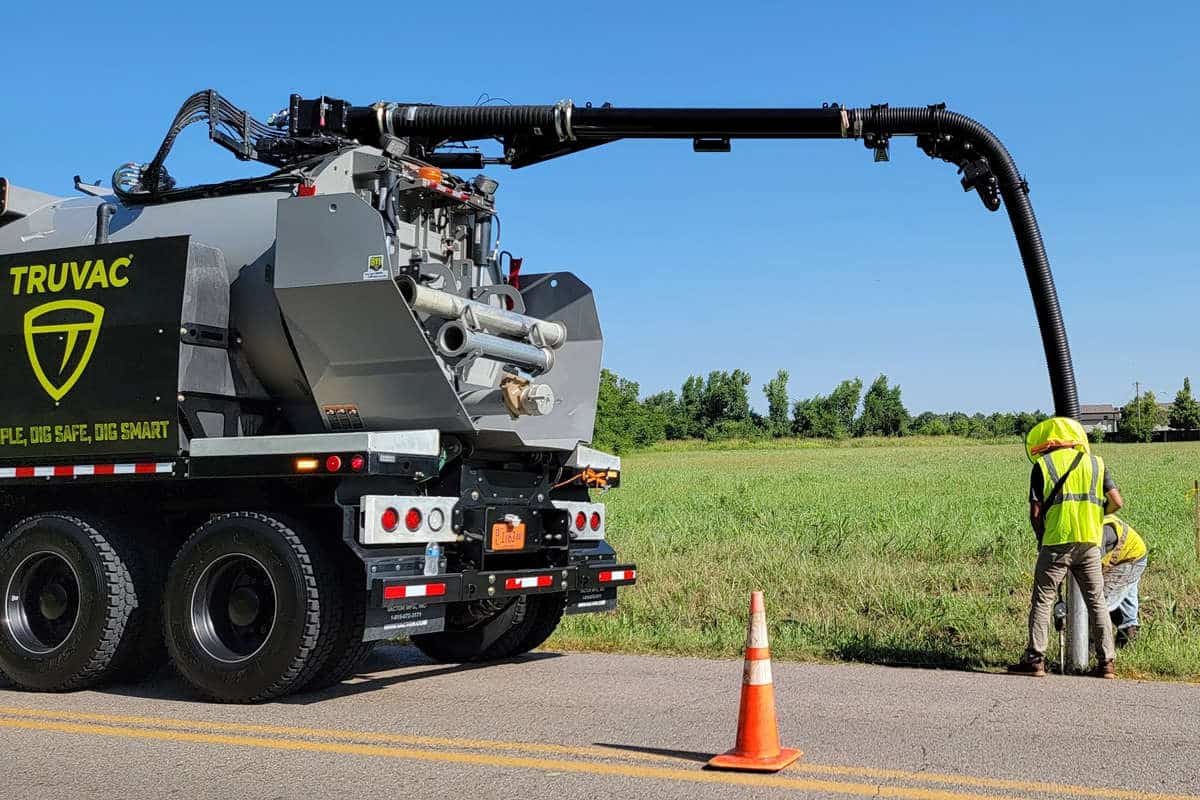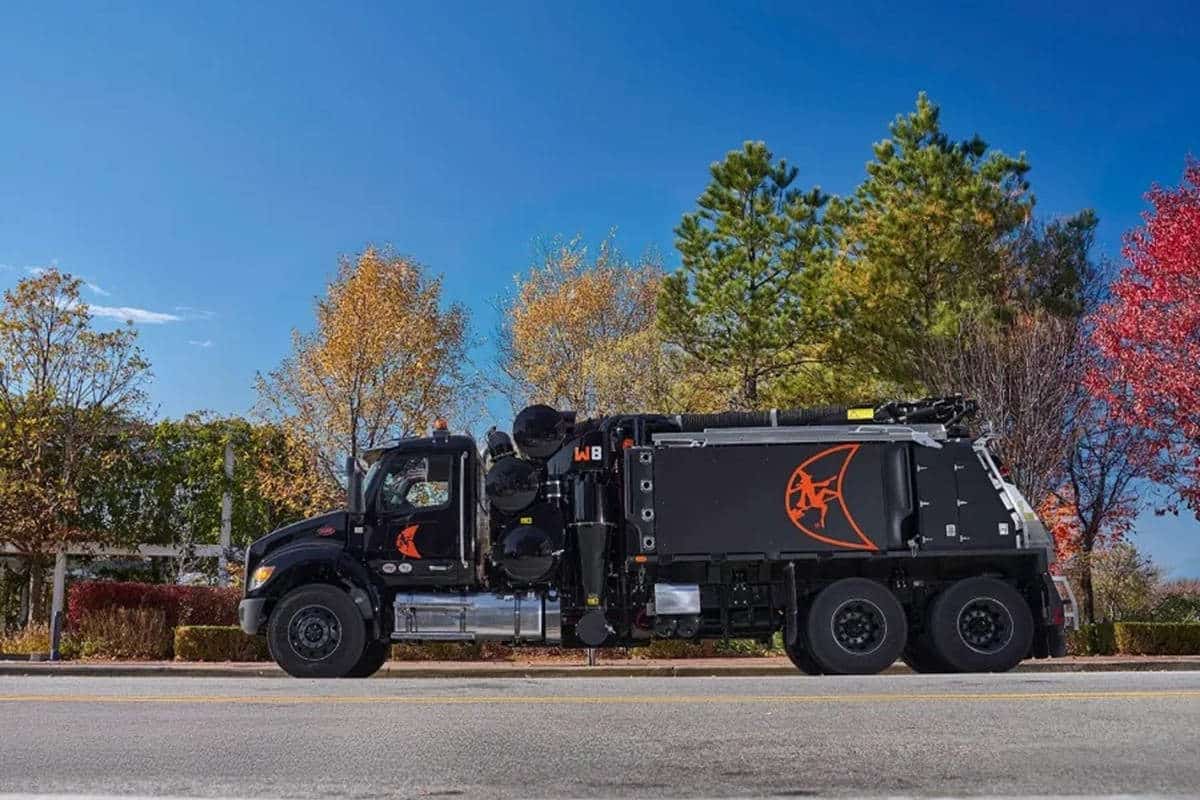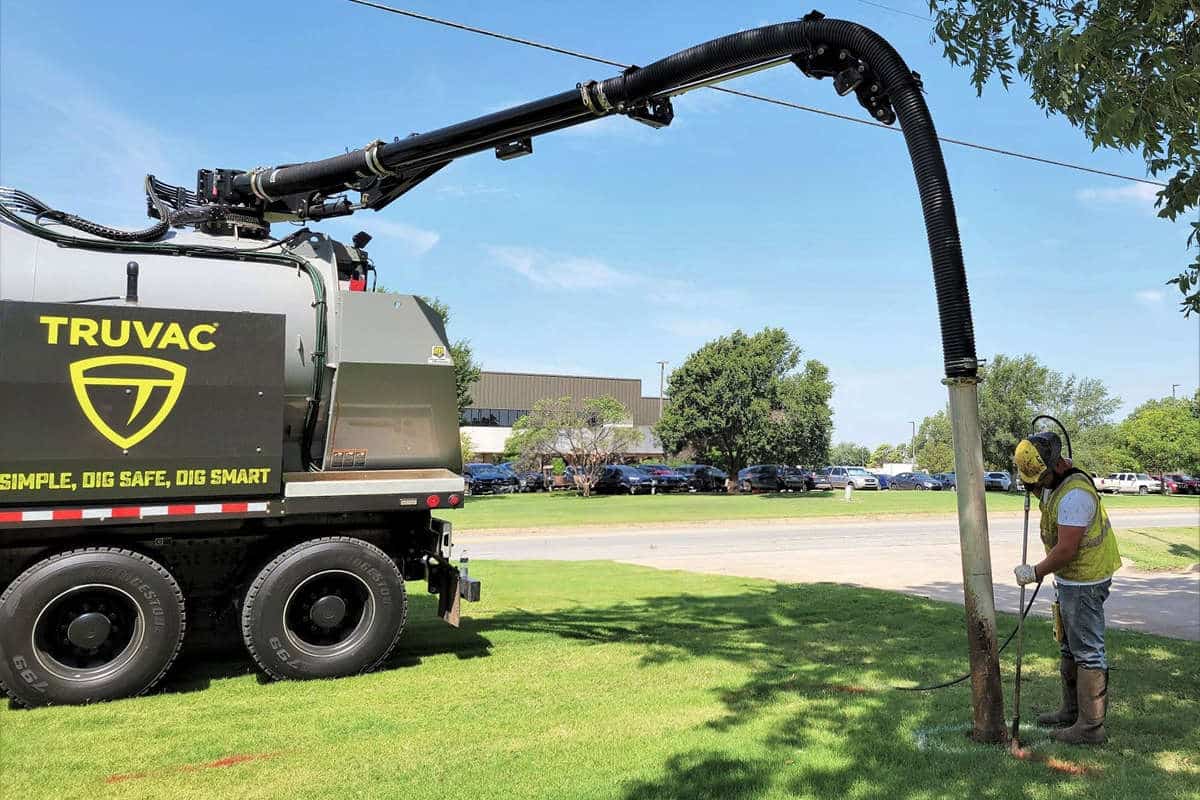Vacuum Excavators Give Contractors a Better View of What’s Underground
There’s a National Procrastination Week, a National Margarita Day (sign me up) and, heck, even a National Button Week. But, did you know April is National Safe Digging Month? Yep, a whole month dedicated to the importance of calling 811 before you dig — and that’s something we can all get on board with. Preventing any damage when digging around underground utilities cannot be understated. By avoiding a utility strike, contractors not only protect their company, but also the public from potential danger or lost services.
While contacting 811 and having utilities identified is a great place to start for contractors, sometimes a job requires a closer look at what’s below. Enter the vacuum excavator.
“A contractor might consider adding a vacuum excavator to his or her fleet to verify utility depths prior to open excavation projects due to safe digging objectives,” says Jeff Wage, vice president of McLaughlin. “Whether it be the contractor’s own business philosophy or project specifications that require utilities be visually confirmed prior to excavation, vacuum excavators can add another level of safety on the jobsite.”

According to Jeff Wage, vice president of McLaughlin, vacuum excavation brings safety to the next level by verifying utility depths prior to open excavation projects.
Vacuum excavation technology has been around in some shape or form since the 1950s. Vacuum hoses are often seen around work areas suctioning the earth to expose a utility in a quick and safe manner. In 10 minutes or less, the operator can safely identify and positively locate a utility — avoiding the potential of damaging it during a dig.
The search for a vacuum excavator begins the same as any piece of equipment: Know the job you’re planning to complete. By identifying the typical type of work your crew will perform, the equipment decision process will run a lot more smoothly.
“When purchasing or renting a vacuum excavator, a contractor should choose the size of vacuum that best fits the application for which it will be most used,” says Wage. “Contractors need to consider the tank size capacity they need, the vehicle that will tow the vac and the CDL class of machine before making a final purchase decision.”
Other considerations include soil conditions and travel distance to a disposal site (see the sidebar on air vs. hydro excavation on page 26), as well as any options manufacturers may offer on their machines.
“For added versatility, customers should choose a vacuum excavator that offers plenty of options to meet their specific needs so they can achieve maximum productivity on the job,” says Ben Schmitt, product manager for Vactor. “There are several option choices available, including an air compressor for excavation or air tool use, water heaters to help cut through frozen ground and clay, a hydraulic tool package, a second operator’s station, offload and cold-weather options and additional tool boxes.”
Getting to Work
After a machine is selected, it’s important to know the best operation practices to keep the vacuum excavator productive and the operator safe. Proper equipment training and studying the owner’s manual are important before taking the machine out on a job.
“One of the biggest safety concerns with vacuum excavation is the vacuum capabilities of the unit,” says Schmitt. “Many of the larger vacuum excavation units operate at 28-in. Hg of vacuum, which can pull almost 800 lbs through an 8-in. diameter hole. Careful operation will significantly reduce the risk of an accident.”
After an operator is prepared for the task, next it’s making sure the machine is ready. Brian Showley, vice president on Vac-Tron Equipment, says a complete safety check of the equipment should be done before the machine leaves the shop. He says this includes checking that all engine fluid levels are topped off, components are in working order and safety gear for the operator is in place.
Safety is key on any jobsite and working with a vacuum excavator is no exception. Wage offers five tips for safe and productive vacuum excavation:
- A two-to-one spoil to fresh water capacity ratio is ideal for an efficient vacuum excavator.
- For the most productive excavation, keep your digging lance 2 in. off the formation and allow the water to do the cutting. Forcing the lance into the formation increases the risk for utility damage.
- When using a suction tool, the best practice is to keep the excavation hole dry. A dry hole will cut more efficiently since the lack of fluid will prevent dampening the cutting pressure of the digging lance.
- To maintain a vacuum’s optimum efficiency, clean the unit’s cyclone canister each time you dump. Cleaning the final pass filter once a day will also help increase productive suction characteristics.
- When engaging the trigger on the digging lance, always make sure the tip is pointed downward. Downward pointing is good for extending the life of the tool, as well as providing a safe environment for operators and others on the jobsite.
Maintenance Matters
As with any piece of equipment, maintenance is especially important to keep a vacuum excavator up and running properly. Operators are encouraged to follow the unit’s owner’s manual for particular checkpoints and timetables.
“Routine maintenance is vitally important to a vacuum both for ensuring productivity on a jobsite as well as operator safety,” says Wage. “A properly maintained vacuum excavator will last a long time for contractors — poorly maintained units can suffer from both small problems and major component failure. Filtration system maintenance is key to extending the life of a vacuum excavator. The blower on a vacuum [which is what we are trying to protect through filtration system maintenance] is the second most expensive single component of a vacuum excavator.”
Showley mentions that daily maintenance includes checking the engine fluid level and the vacuum filtration system. The weekly checklist focuses on belts, greasing components and keeping an eye on the unit’s water system. Maintenance tasks are fairly similar for both air and hydro machines, but Schmitt points out a couple differences.
“Air and hydro vacuum excavators have similar maintenance with the major difference being the media system,” he says. “With a hydro excavator, there is a water tank and water pump that must be periodically maintained such as cleaning or replacing filters and water pump oils. Similarly, an air excavator has an air compressor with filters and oil that will need to be periodically checked and replaced. Air excavators do require a little more focus on the filtration system as the material being vacuumed is lighter and has more of a tendency to fill up in these areas.”
If any maintenance concerns or questions go beyond the owner’s manual, the dealer is a great resource.
“The same team that aided in the buying process can be a great resource in after-sale needs like service and maintenance,” says Schmitt. “It’s important to select an equipment manufacturer that offers training and 24-hour service support. Contractors need peace of mind that the equipment will be adequately supported by the manufacturer.”
Pam Kleineke is managing editor of Utility Contractor.
Air, Water or Both?
Vactor’s Ben Schmitt Breaks Down the Options
A customer looking to service the utility segment would likely benefit from a machine that is capable of both air and hydro excavation capabilities, while another customer looking to do larger projects would likely require only a hydro excavation machine and contract or rent when air excavation was required.
Air Excavation
Air vacuum excavation is desired in applications where the soil is loose, water is not readily available, in small-scale excavation projects or where immediate backfill of the hole is required. When working around buried electrical lines or brittle utilities, air vacuum excavation is often preferred due to the lower operating pressures.
Hydro Excavation
Hydro excavation units work well in frozen ground or when working with harder materials. On-board water heaters may be used to warm the water and aid it in cutting through the soil. Water also works as a lubricant and helps to prolong the life of the excavation equipment by reducing wear on the vacuum hose and other components in the air stream.
Dual Units
There is a trend to increase versatility of the equipment. Having a vacuum excavator with hydro and air excavation capabilities increases the customer’s versatility of the equipment and allows them to perform any vacuum excavation required. Some utilities and departments of transportation are beginning to require air-only vacuum excavation for a myriad of reasons. Air also allows the material to be backfilled for subsurface utility engineering (SUE) applications, while the water allows cutting through harder or frozen surfaces.
For more on vacuum excavation, click here.
Tags: April 2017 Print Issue, McLaughlin Underground, Vac-Tron Equipment, Vactor




